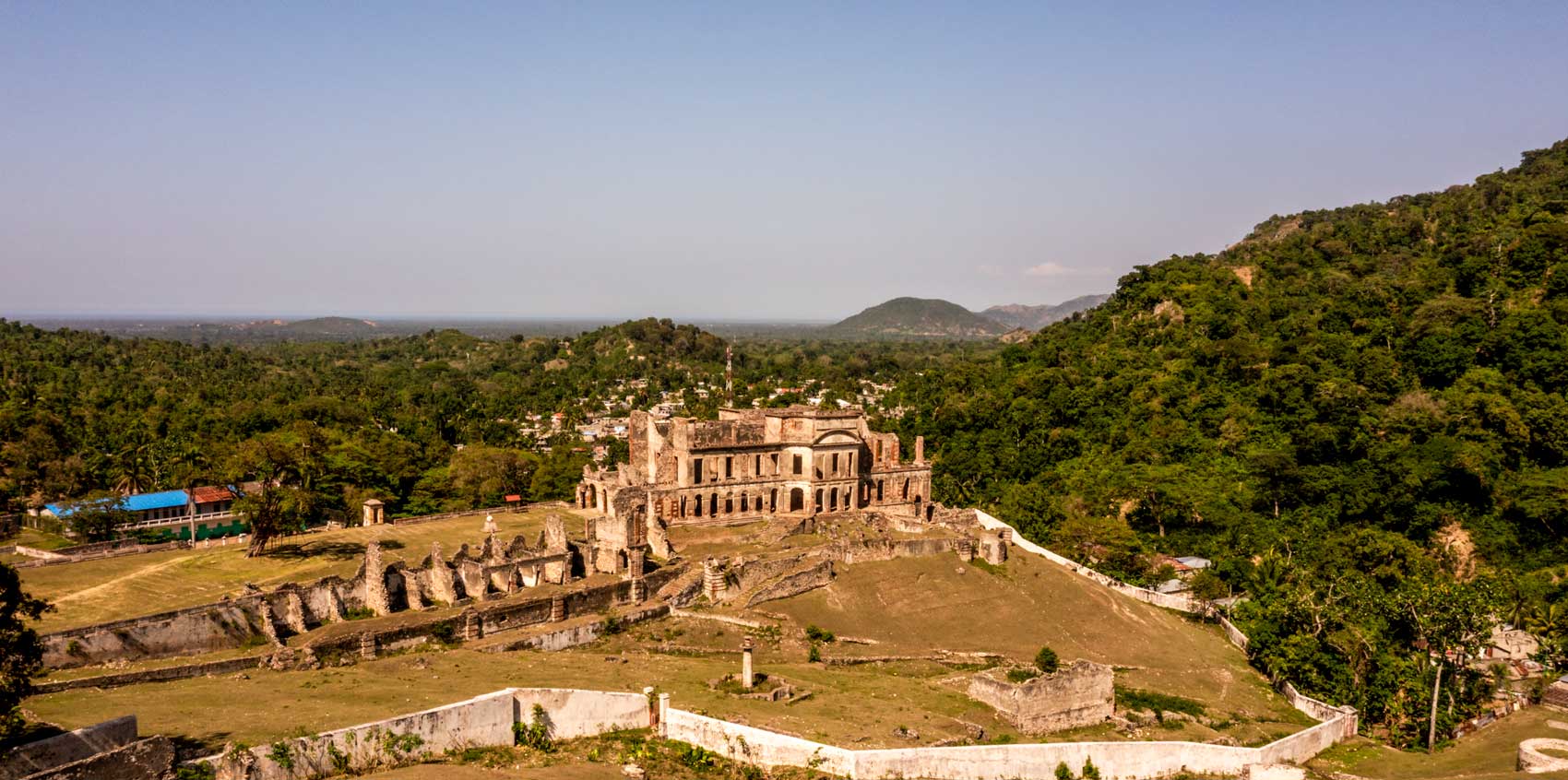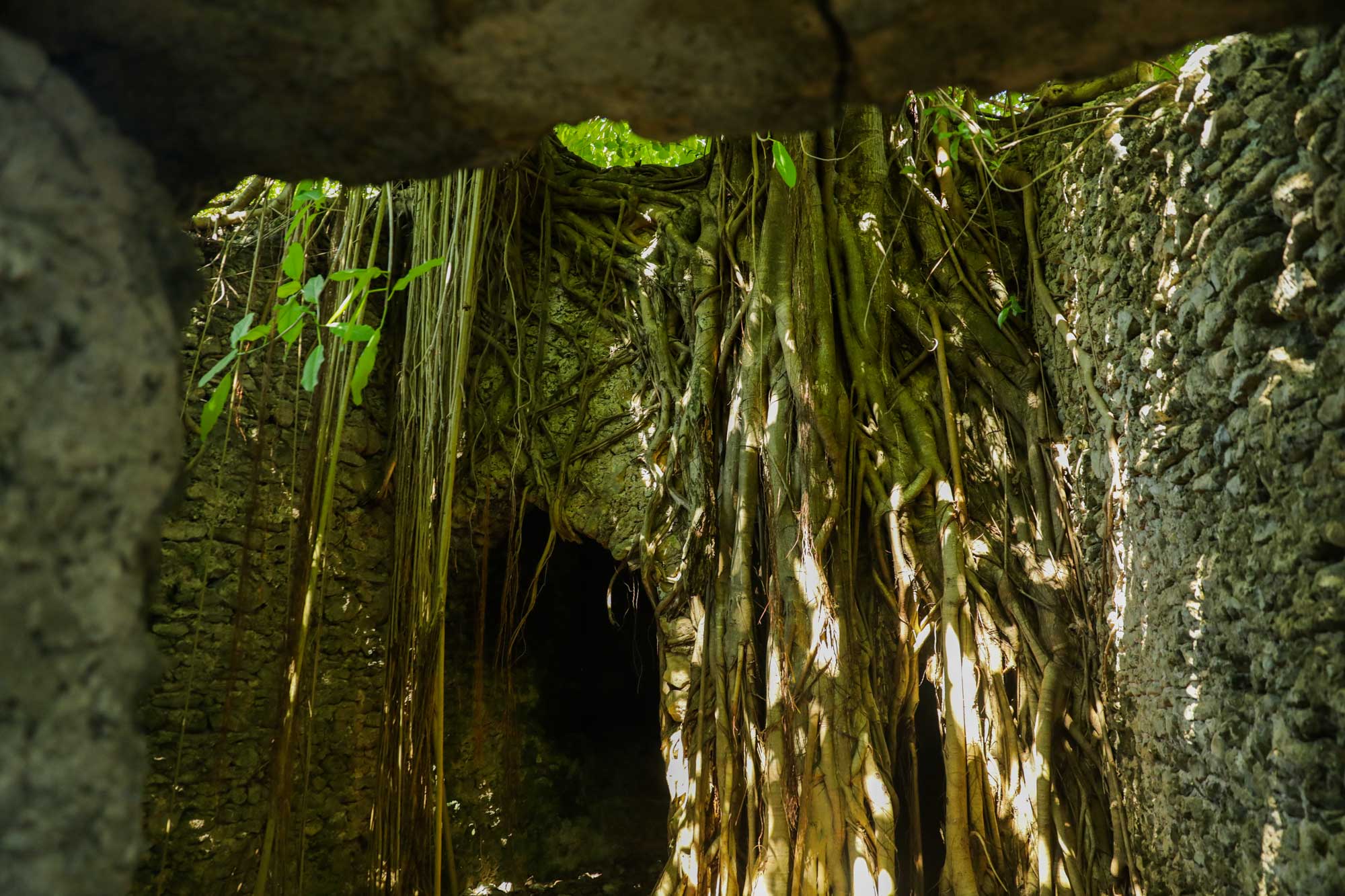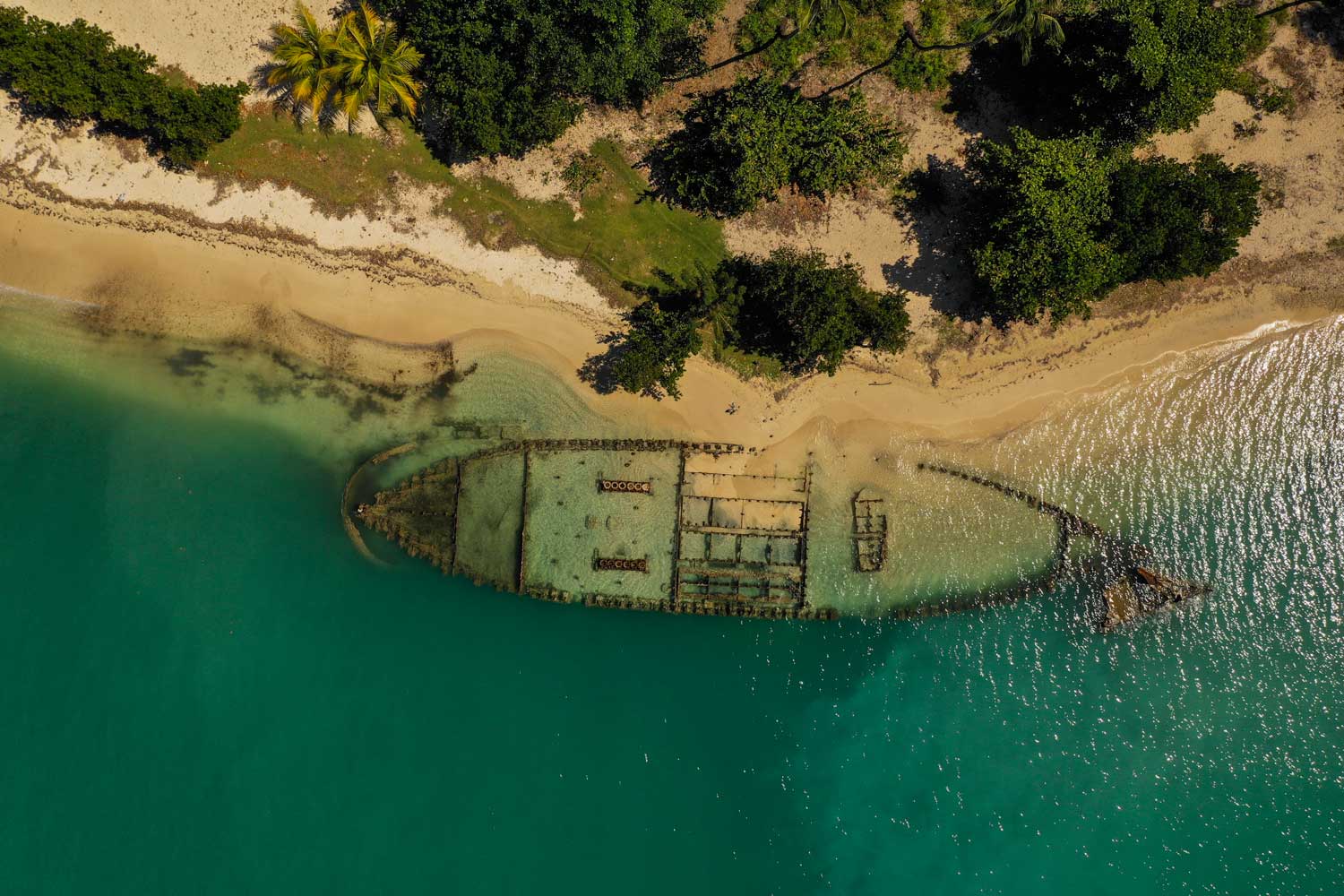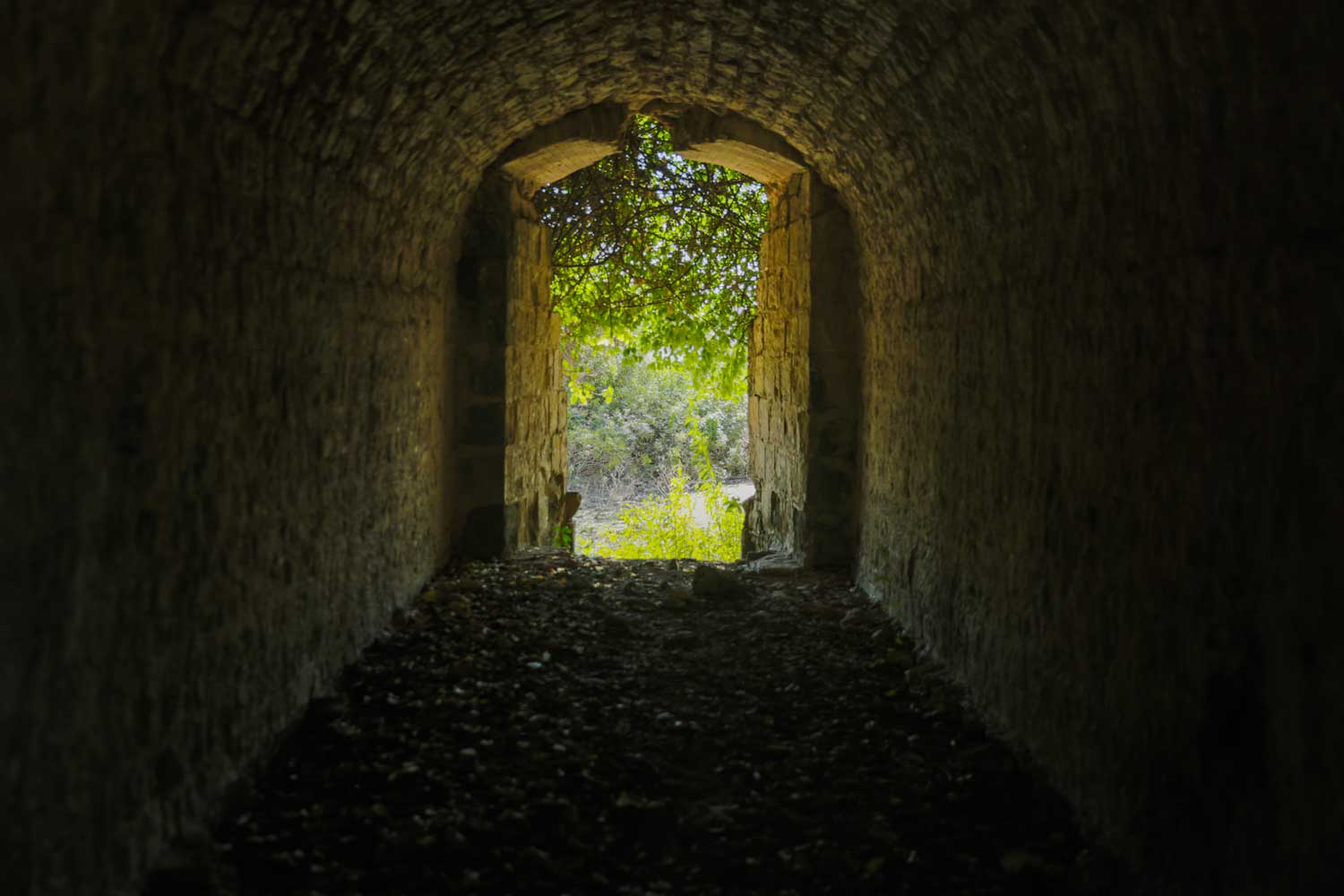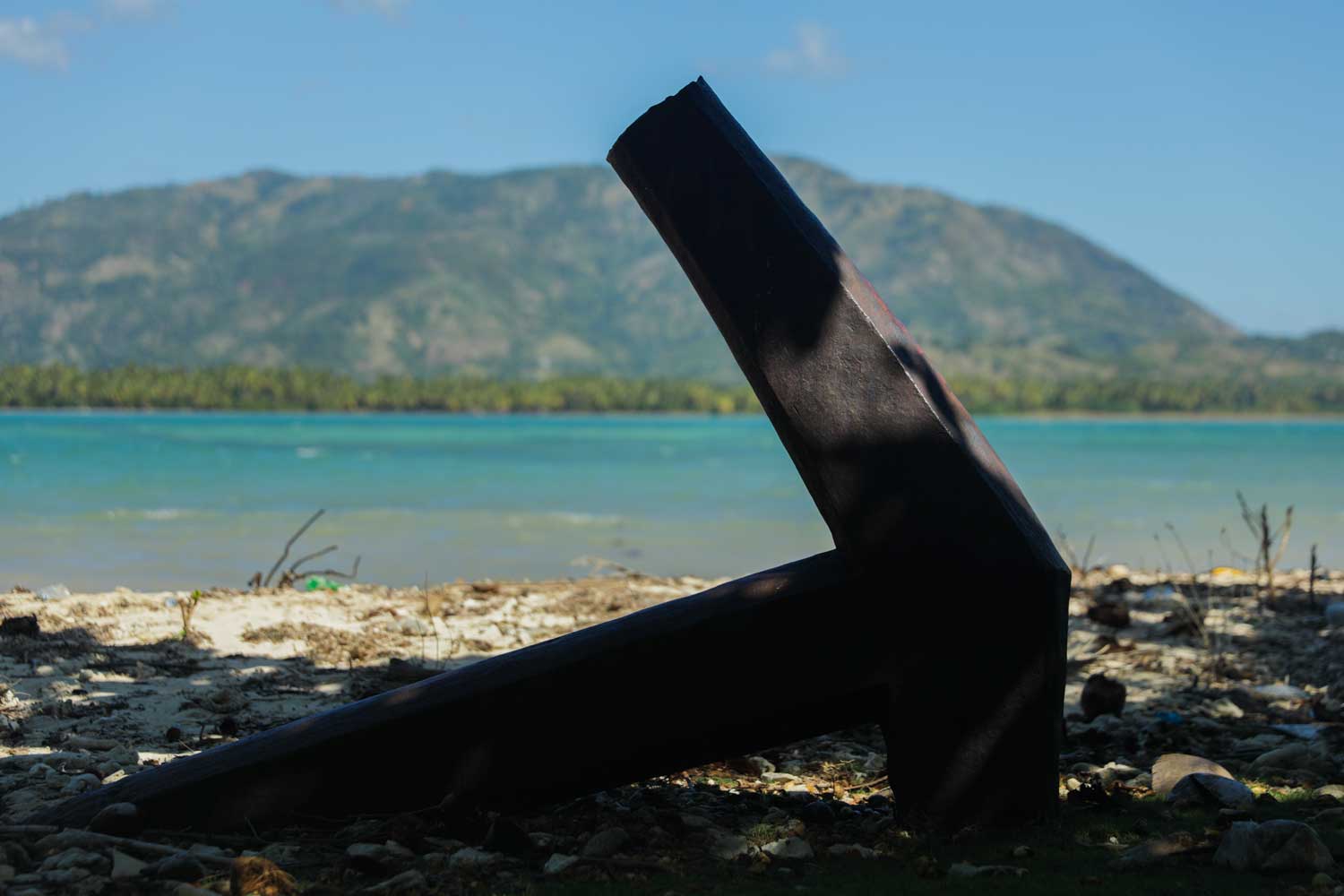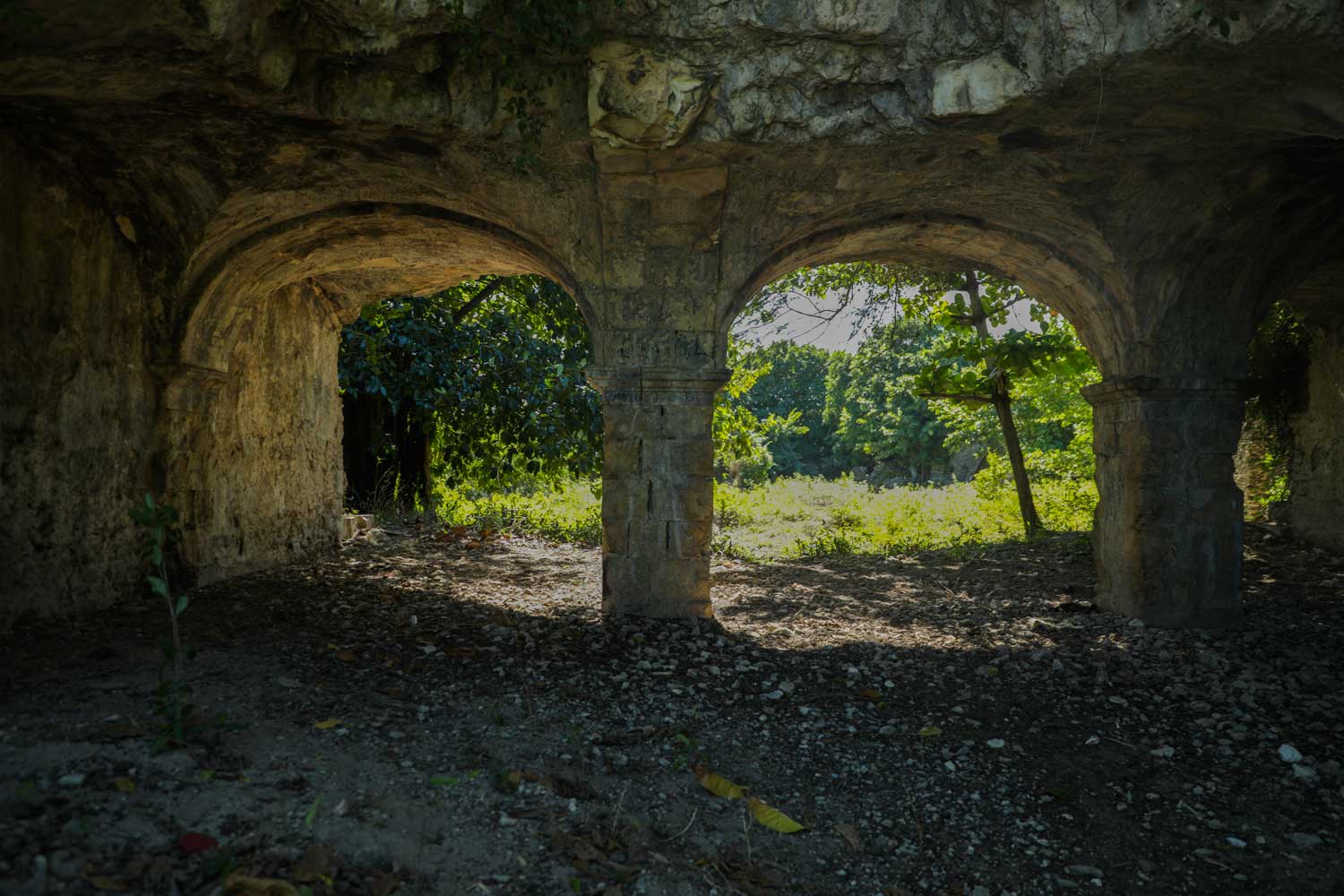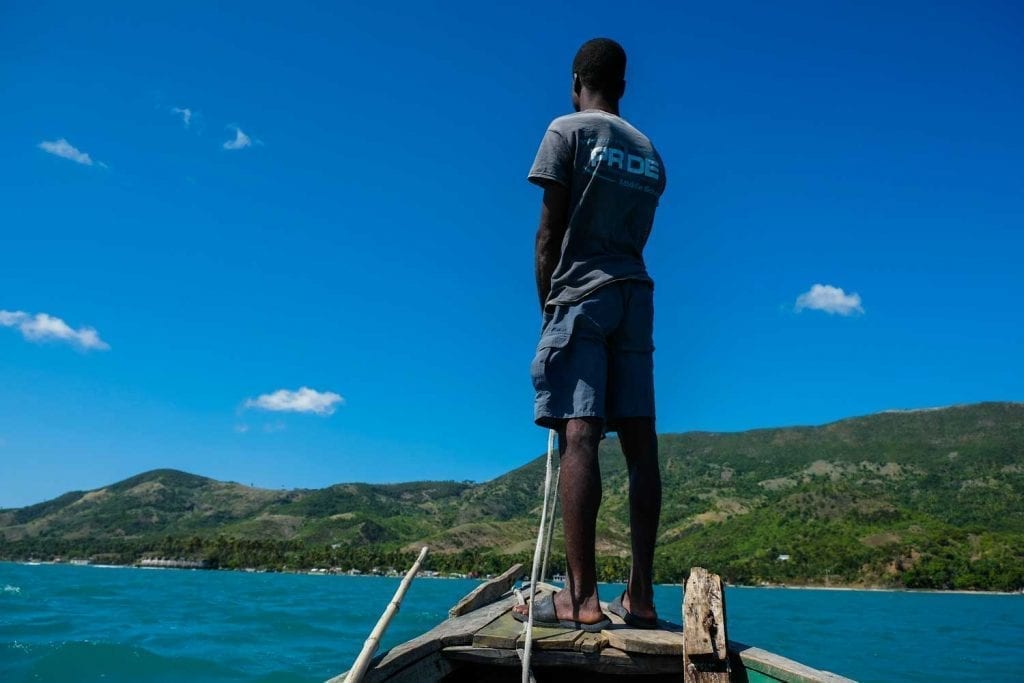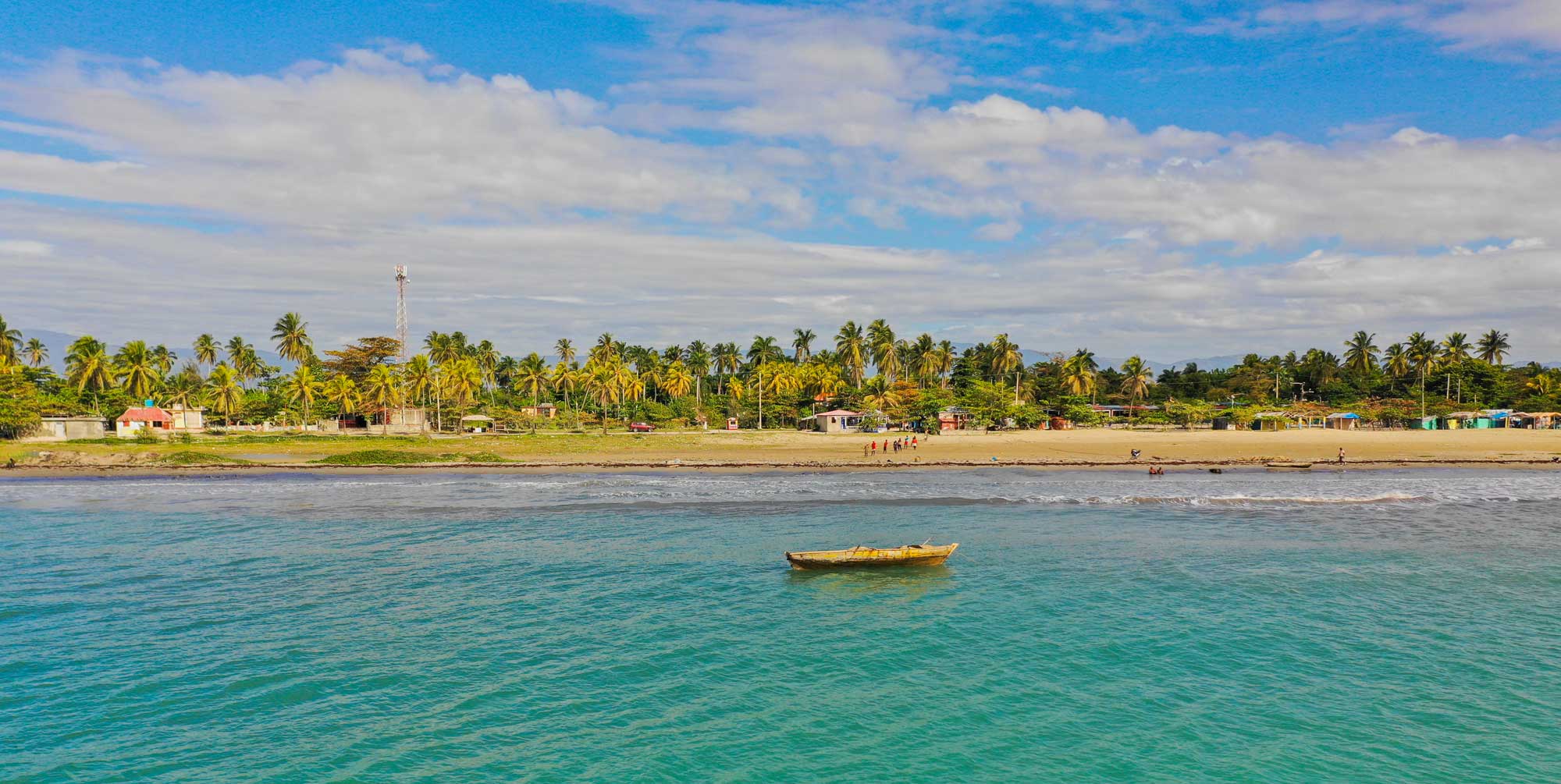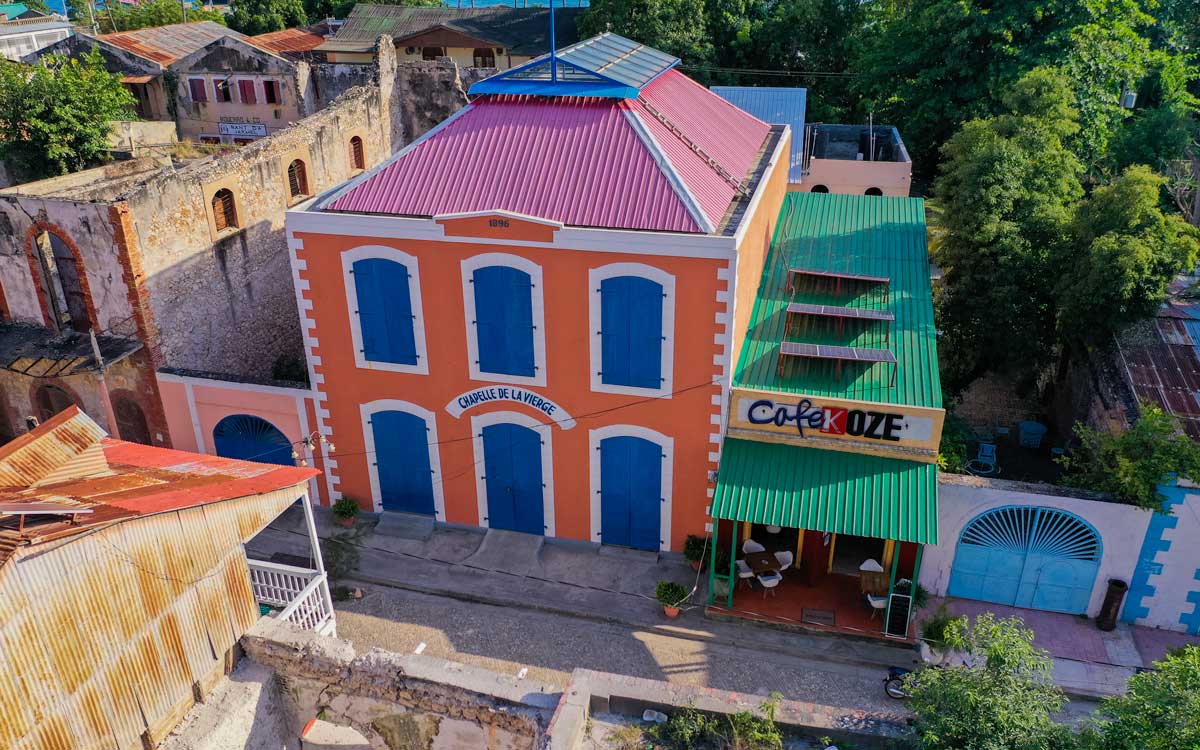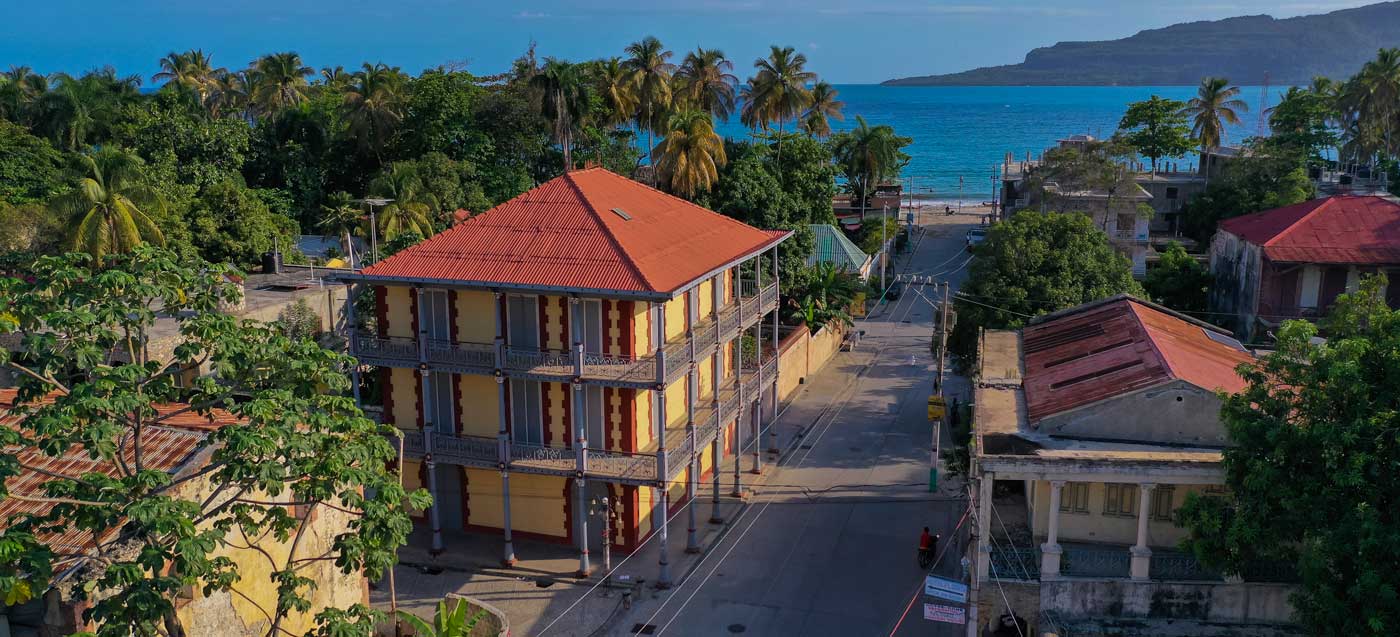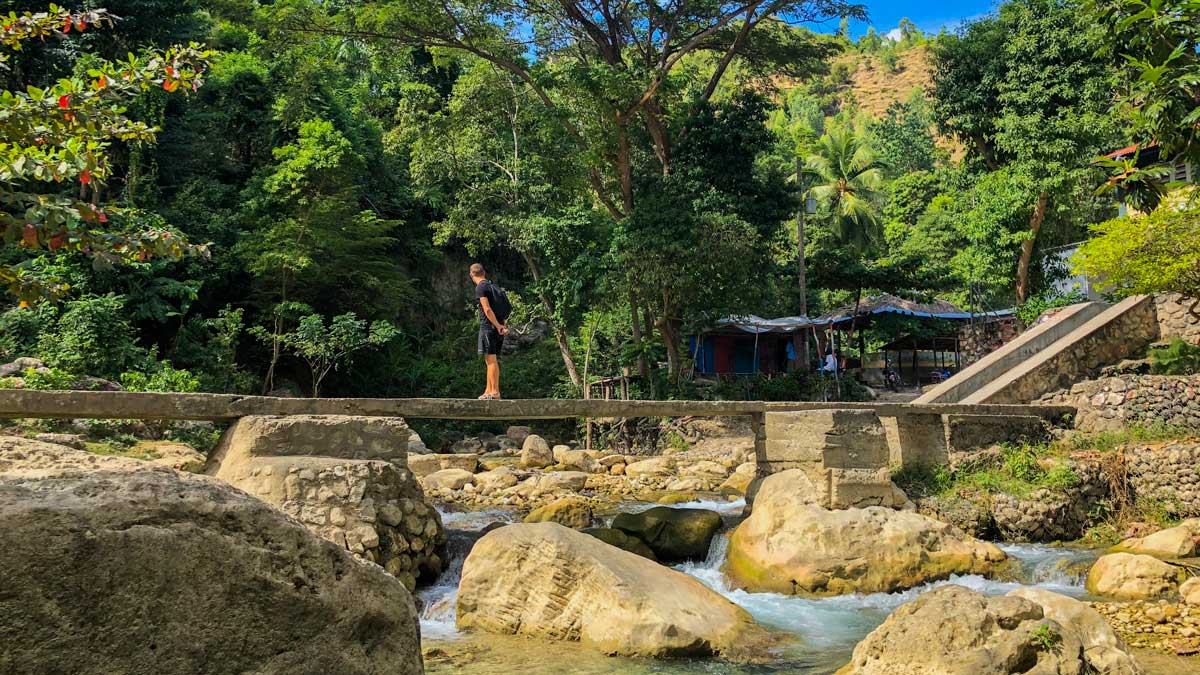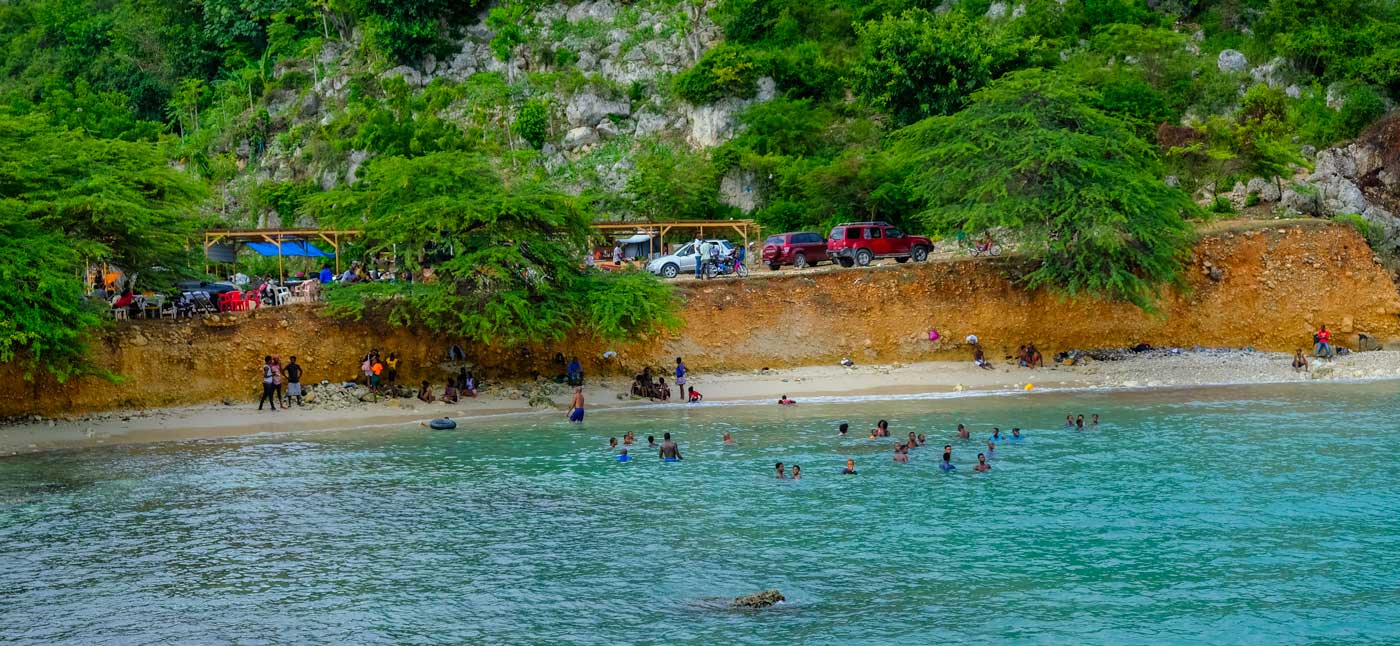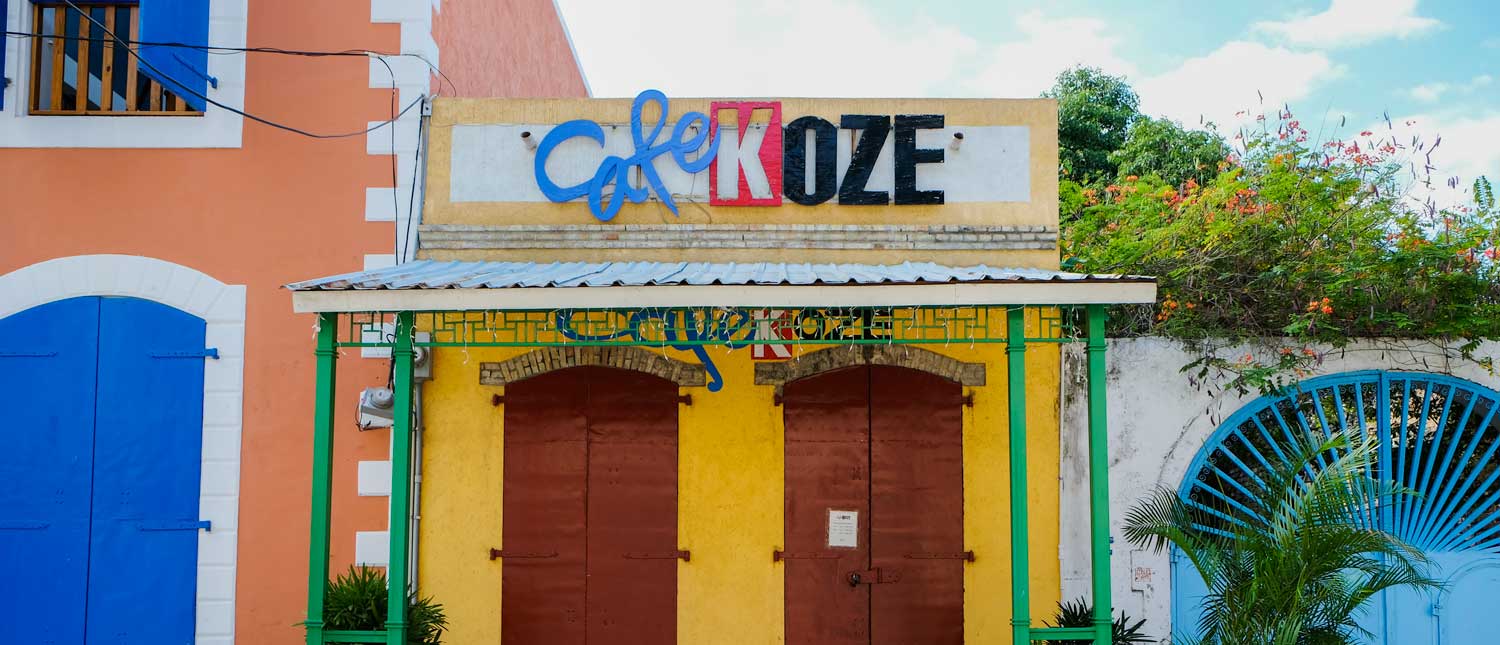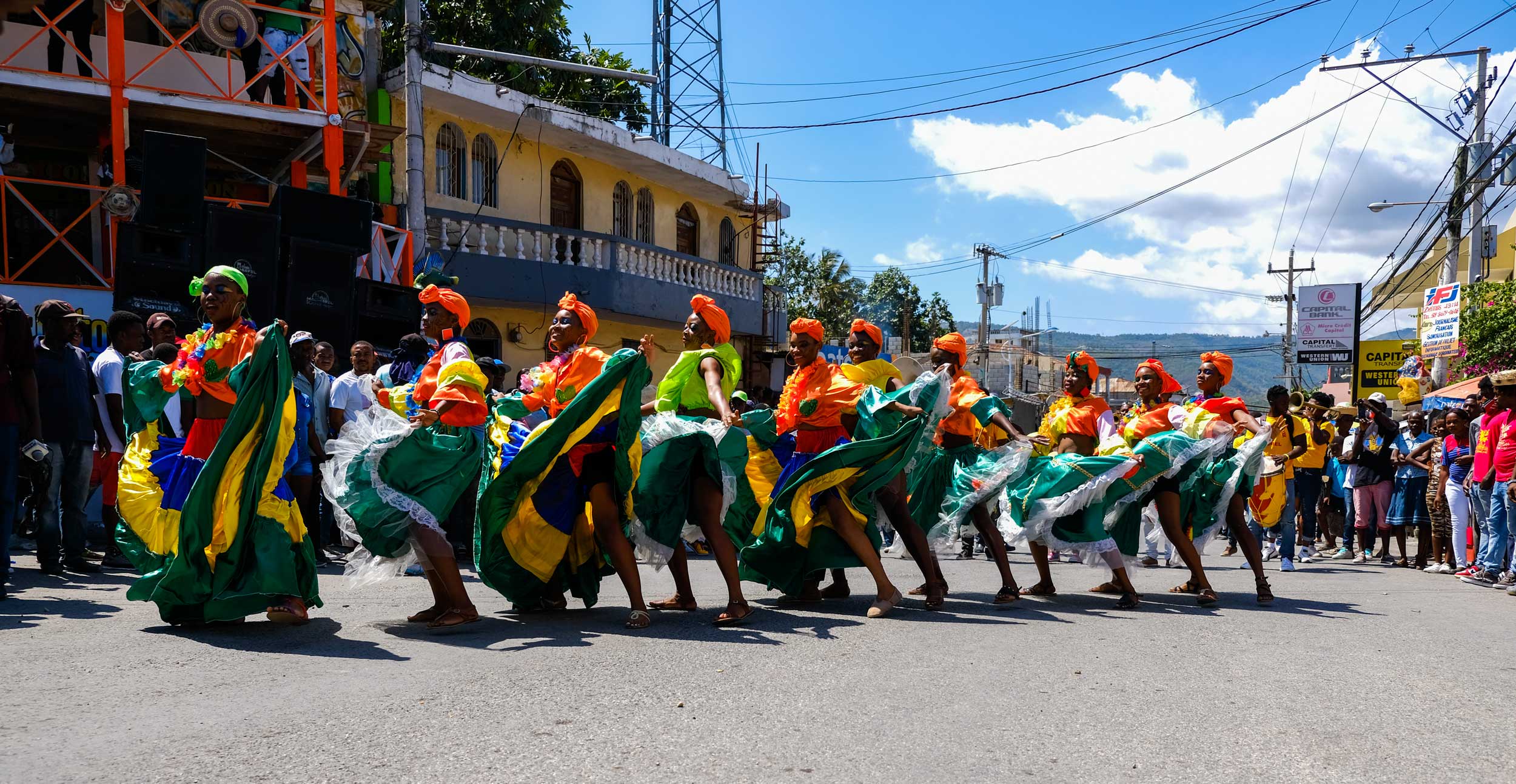
Photo: Franck Fontain
Festikap Kite Festival
La Vallée’s vibrant kite festival is the place to be every January 2nd.
Picture this: After a week of adventuring across Haiti, from hikes to road-trips to the beach and hidden waterfalls, it’s time to celebrate the new year. You decide to go to Jacmel and watch the fireworks by the beach. The next day, you throw a picnic blanket in the car, drive up to La Vallée, and admire a sky full of kites while you kick back with food and drinks. You can even try your hand at flying a kite yourself, with the help of other participants or the festival organisers. It will take a little less than 300 gourdes (about US $3) to buy a nice kite and participate.
Because you can buy a kite on arrival, the bar for getting involved is pretty low, so Festikap makes a great spontaneous adventure! The festival happens every January 2nd, making it the perfect activity for anyone planning to spend New Year’s Eve in Jacmel (or – even Port-au-Prince).
Festikap vibes are comparable to Champ-de-Mars in February during carnival. Kites in a stunning display of colors and creativity fill the sky for hours on end: it’s a flying art exhibition. With children running around, elders watching and younger folks flying their kites, the atmosphere in La Vallée is like one big camping trip.
Festikap Festival, La Vallée de Jacmel
Photo: Franck Fontain
Behind the magic
The famous kite-flying festival of La Vallée de Jacmel — or “La Vallée” as locals call it — will be celebrating its 10th anniversary in the coming year. Festikap is a festival put together by the Organization of Young Valley University Students for Progress (Organisation Universitaire de Jeune Valléens pour Le Progrès) with the goal of preserving a tradition deeply rooted in Haitian culture but threatened by forgetfulness and abandonment. This yearly event serves as an entry point to the beautiful community of La Vallée de Jacmel. The celebrations conveniently happen on January 2nd which is a holiday in Haiti (Ancestor’s day).
Kite flying is a vital part of Haitian culture. Starting in the month of April, on the roofs of houses all across the country, children, their parents, and sometimes even their grandparents can be seen tugging on thin, nearly invisible pieces of thread tied up to makeshift kites. Most of them are made of plastic; the kind used to sell papita or roasted peanuts in — some clear, some blue, some pink. Others are more elaborate, made of brown paper with red and green accents, tails, and flourishes. All together, they dot the bright blue skies of early summer in colorful spiraling swarms.
In preparation for Festikap, organizers put together workshops to create a certain number of kites to be exhibited on that day. This festival is not just recreational, though – the preparation process encourages creativity and community engagement from different crowds. The festival hopes to revive interest in the endangered tradition of making and flying kites, and the efforts that go into planning Festikap can be considered as a kind of movement meant to transfer a skill and salvage a tenuous cultural heritage.

Photo: Franck Fontain
Getting there
La Vallée is located an hour’s drive northwest of Jacmel and about three hours’ drive southwest of Port-au-Prince. Although the name La Vallée suggests a low valley hidden in shadows, the town actually stands a half mile (around 800 meters) above sea level, and offers a panoramic view of the south of Haiti. A trip up to La Vallée unlocks the perfect experience for anyone hungry for a little bit more than simply spending a weekend at the beach.
Festikap is a great way to experience Haiti differently and genuinely. If colors, music, and community are your thing, it’s a must-visit event to add to your itinerary!
Written by Kira Paulemon.
Published October 2019
Explore more festivals and events

Paradise for your inbox
Your monthly ticket to Haiti awaits! Get first-hand travel tips, the latest news, and inspiring stories delivered straight to your inbox—no spam, just paradise.








